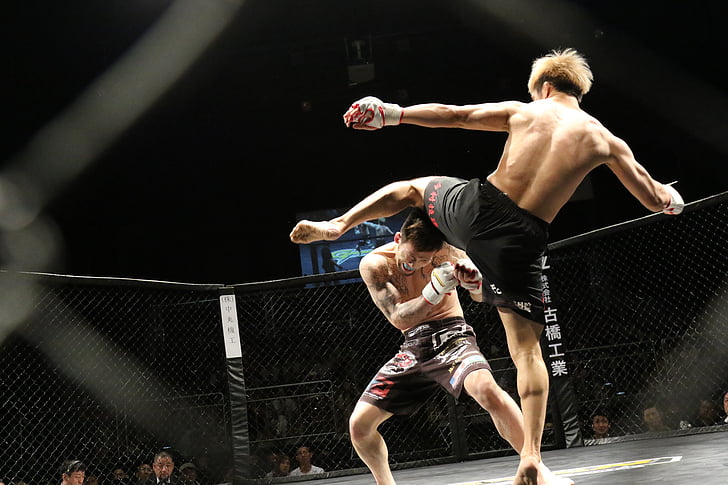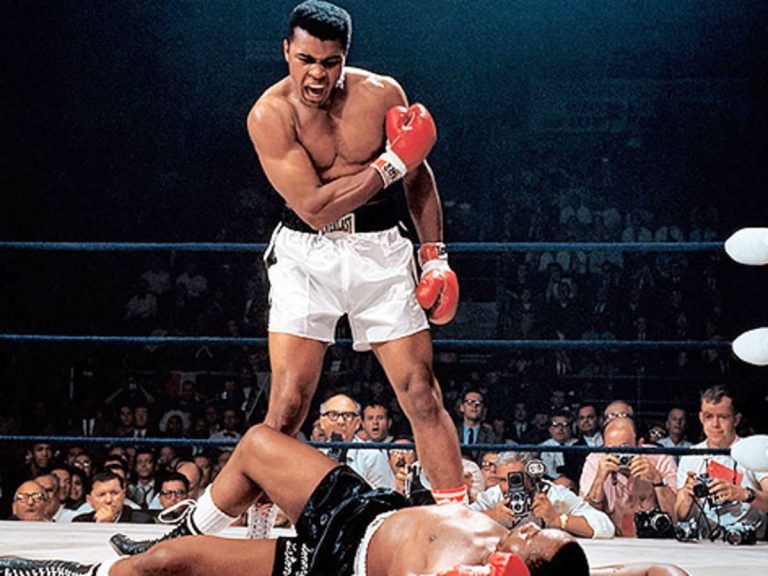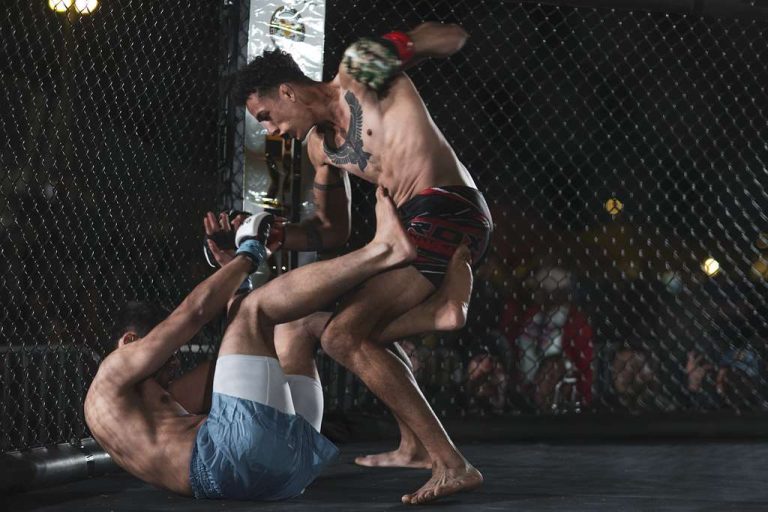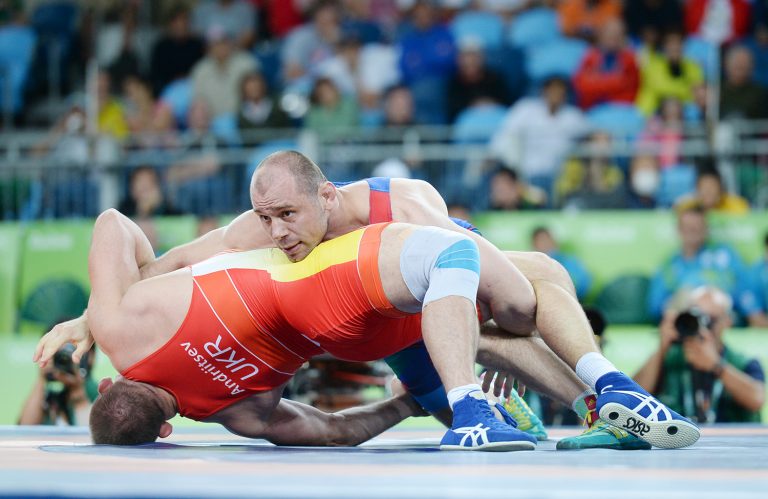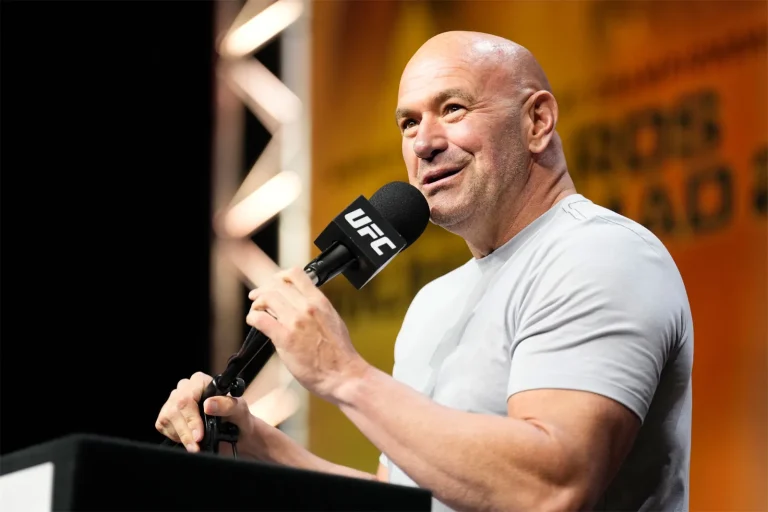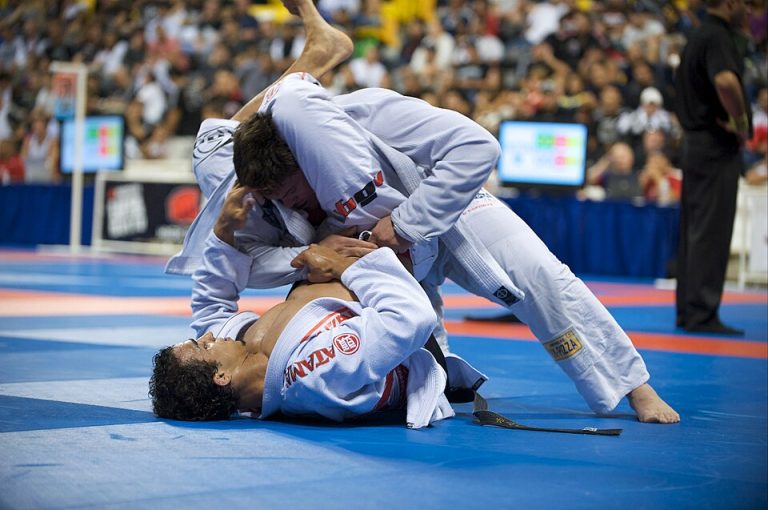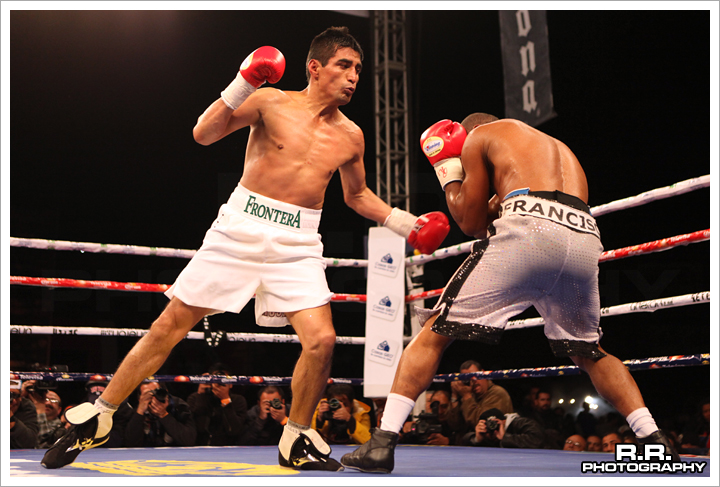
Welcome to the gritty, sweat-drenched world of Mexican boxing. If you’ve ever watched a fight and seen two warriors duking it out in a toe-to-toe firefight, there’s a good chance you’ve witnessed the famous Mexican style.
This style isn’t just about throwing wild punches – it’s a philosophy of constant pressure, heart, and celebration of pure courage in the ring. This in-depth guide will cover everything you should know about Mexican boxing: its history, key traits, and training tips. You’ll understand why this style has produced so many champions by the time you’re done going through it, and why it can make your training more exciting.
Now, let’s pay tribute to arguably the most exciting fighting style in boxing.
What Is the Mexican Boxing Style?
At its core, Mexican-style boxing is an aggressive, forward-moving, and relentless style. Imagine a boxer who doesn’t back off – ever – and throws punch combinations like they’re life depended on it.
That’s Mexican boxing for you. Fighters who follow this style keep pressure on their opponent, trade punches head-on, and throw lots of body shots. In other words, you step into the ring thinking, “I’m gonna hit you more than you hit me”, and you carry that out.
The Mexican style earned its name from Mexico’s rich boxing legacy. Generations of Mexican boxers are famous for their toughness and endurance. They made boxing a matter of national pride, ranking it as Mexico’s most popular individual sport next to football and producing the second-most world champions of any country. When people say “Mexican style,” they picture fighters with iron chins and non-stop aggression. It’s a style that evokes images of a brawl, but with serious technique.
Put simply: Mexican boxing is a battle-hardened, body-focused brawling style. You’ll see fighters walk forward at you unafraid, peppering your midsection with hooks and cutters, then rattling off headshots. It’s an exciting spectacle. If you love action, you’ll love this style. And if you want to train like a Mexican fighter, you need to train to be relentless, durable, and strong.
A Brief History: Pride and Punches
The Mexican boxing tradition dates back to the early 20th century. Since the 1920s, boxing has been a way for Mexicans to prove their toughness and spirit. Fighters often came from humble beginnings and used boxing to rise in social standings. They developed a style born of necessity in those dusty old gyms: hit hard, hit often, and never give ground.
One historical nugget: by the 1970s and ’80s, Mexican boxing had its golden era. Legends like Julio César Chávez and Salvador Sánchez defined the style in the ring. Chávez, for example, was famous for pounding opponents with body shots and combinations while eating punches with his chin, turning boxing into a “symphony of controlled chaos”. Salvador Sánchez combined technical skill with relentless pressure, making defensive moves part of the attack.
The lineage continued. Fighters like Juan Manuel Márquez used ring IQ and counterpunches, but still embodied the heart of Mexican boxing. Today, stars like Canelo Álvarez carry the torch, mixing classic pressure with modern movement. Even non-Mexicans like Gennady “GGG” Golovkin adopted the style and became beloved by Mexican fans.
Key Characteristics of Mexican Boxing
What makes the Mexican style distinct? Let’s break it down into key principles and traits – think of these as your checklist if you want to box like a Mexican champion:
- Relentless Forward Pressure: Mexican-style fighters never back up. They walk you down, cut off the ring, and force you to fight on their terms. This means you, as the Mexican-style boxer, are constantly advancing. Your footwork isn’t about dancing away, but stepping in to make the fight close quarters.
- High-Volume Punching: Instead of looking for a single knockout blow, Mexican boxers throw combinations, lots of them. Think 3, 5, or even 7-punch combinations where each shot lands. The idea is to overwhelm with volume. Your jab-body-hook-uppercut combos should keep coming nonstop. This barrage keeps opponents on their heels, never sure where the next punch will land.
- Body-Focused Attacks: If there’s one place a Mexican boxer loves to punch, it’s the body. Hard hooks to the ribs, uppercuts to the solar plexus – you name it. Targeting the midsection wears down opponents, slows their movement, and opens up head shots later. This love of body punching is a hallmark trait: Mexican fighters love draining opponents’ “gas tanks” by hitting them low and hard often.
- Close-Range Combat: Mexican boxing thrives in tight spaces. Fighters are comfortable trading punches at very close range, in toe-to-toe battles. You’ll keep your hands up in a solid guard and use bobbing and weaving up close rather than retreating. As BoxRope notes, “Mexican fighters embrace the intensity of toe-to-toe battles”. That means you learn to be tough defensively (with tight defense and head movement) while attacking.
- Durability and Heart: Mexican boxing values toughness. You show grit by taking a punch so you can give one. Fighters in this style wear cuts and bruises like badges of honor. They’re known for exceptional chin and stamina, willing to walk through shots and refuse to quit. It’s said the style rewards heart and endurance: you’ll score points simply by surviving and keeping the pressure up.
- Ring Generalship: Despite the chaotic feel, Mexican boxers often control the tempo. They know when to push harder or pull back slightly, cornering opponents and dictating the fight. By “cutting the distance,” you force your opponent into disadvantageous spots..
In short, train to press forward hard, keep your punch count high (especially body shots), and develop solid defense at close. Mexican-style boxing is as much mental as it is physical; it’s about having the will to keep coming regardless of how much punishment you take.
Training Tips: Boxing Like a Mexican
You’ve got the theory, you might be left wondering how to train in this style. Here are actionable tips to help you fight (and train) like a Mexican-style boxer:
- Build Iron Cardio: Your ability to pressure fighters all around hinges on your conditioning. Engage in a variety of exercises, including interval running, jump rope, and circuit training. Fighters who use the Mexican style must be in excellent shape to maintain constant pressure while absorbing damage”. Incorporate sprints between rounds of shadow boxing, or hard 3-minute jump rope rounds to simulate fight pacing.
- Heavy Bag Work: Spend time on a heavy bag throwing combinations. Mix head and body shots in flurries of 4–6 punches. For example, do 3-minute rounds focusing on jab-cross-hook-body-hook combinations. A good heavy bag, like a Rival Boxing Mark-I Heavy Bag, lets you practice hitting something as hard as an opponent. Use heavier gloves (14–16 oz) so you can condition your shoulders, too. Everlast Pro Style Training Gloves are a solid, affordable choice for heavy bag work.
- Core and Body Conditioning: Train your core hard since body punches are one of the keys to making the Mexican style work for you. Add medicine ball throws, Russian twists, and bicycle crunches to your training routine. The stronger your abs, the more power you can transfer into each body shot and the better you’ll handle blows to your own core.
- Sparring – Up Close: When you spar, try drills that simulate Mexican boxing. Have a partner hold pads or wear light gloves, and practice “pressuring” them. Focus on staying in range and throwing multi-punch combos. Work on slipping or rolling under counterpunches – the style doesn’t ignore defense, it just uses it differently. In sparring sessions, try rounds where you only use body shots and hooks from close range. This builds comfort in those clinch-range exchanges. A popular training deal in Mexico involves having both fighters put their legs inside a tire while sparring, forcing them to exchange blows and evade them with head movement.
- Head Movement & Defense: It’s a myth that Mexican style has no defense. It just uses a different defense. Practice head movement: slip punches at the last second and counter immediately. Keep your gloves high and tight to cover the chin. Drills like weaving under a slow-motion jab can help you stay safe in close quarters. Mexican boxers prefer head movement and a tight guard over constantly dancing away.
- Mental Toughness: Mexican boxing is famous for heart. Cultivate a fighter’s mindset. Challenge yourself in training by sparring even if you’re tired. Learn to grit through rough rounds.
- Recovery and Safety: Getting hit is part of the Mexican fighting style, so always use protective gear. Practice with a mouthguard (e.g., a Shock Doctor Gel Max Mouth Guard is a popular choice) and headgear during practice sparring. Wrap your hands tightly with good wraps (like RDX 180″ hand wraps) under your gloves. This lets you train hard while minimizing injury.
Drilling combinations on the heavy bag, running and jumping rope for cardio, and sparring aggressively will help make the Mexican style part of your muscle memory. Remember: volume and pressure win fights.
How Mexican Style Differs from Other Styles
If you’re familiar with styles like Western (American) boxing or Cuban boxing, you’ll notice stark contrasts. Here’s a quick comparison:
- Mexican vs. American Style: American boxers often emphasize footwork, defense, and counterpunching. Mexican style is almost the opposite focus: relentless offense and toughness. Whereas an American boxer might slip and dart around the ring like Floyd Mayweather Jr., for example, a Mexican-style boxer will press forward and look to push the pace of the fight. The U.S. style might mix up offensive tactics with more varied punch selection, but the Mexican style leans heavily on turning each exchange into a mini-war of attrition.
- Mexican vs. Cuban Style: Cuban boxing is known for sharp movement, fluid defense, and precise counter-striking. Mexican boxing, on the other hand, values grit. A Cuban fighter might dance, whereas a Mexican fighter will stand toe-to-toe. Both can be effective; it just depends on your personality and what excites you.
- Cultural Roots: Mexican boxing reflects Mexico’s fighting spirit and pride. It’s about courage and heart. Fans love the style because it’s exciting and aggressive. By contrast, styles from other cultures (like slick British boxers or tactical American boxers) might prioritize “mind games” and technical defense. Both have their place, but Mexican boxing is often called “the art of brawling with style”.
In short, Mexican boxing is the sports version of an all-out assault, while many other styles are more like chess with punches. If you love action and can handle an adrenaline rush, Mexican boxing will feel natural.
Legendary Mexican Boxers (and Style Icons)
No discussion of Mexican boxing is complete without name-dropping its legends. These fighters didn’t just win titles – they embodied the Mexican style:
- Julio César Chávez (Sr.) – Possibly the face of Mexican boxing. A six-time world champion, “J.C.” never shrank from a fight. He could take a right hook all day and still charge forward with body shots of his own. Chávez combined an “unyielding style of attack” with a rock-solid chin. Watching Chávez was like watching a clinic in pressure fighting – he earned a record 27 undefeated title defenses, often by wearing his opponents down.
- Salvador “Sal” Sánchez – He was Mexico’s lightweight superstar in the early 1980s. Sánchez had silky skills and savage will. He mixed tight defense with brutal combinations. Boxing fans still marvel at how Sánchez could score points while beating you up at the same time. His classic fight vs. Wilfredo Gómez showcased pure Mexican technique: countering plus rapid counter-attacks, all with ferocious aggression.
- Juan Manuel Márquez – The master tactician. Márquez was known for precision counterpunching, but he also had the Mexican warrior’s resilience. Remember his wars with Manny Pacquiao? Each was a Mexican-style thriller. Marquez could switch between defense and offense seamlessly, yet he always displayed that same refusal to yield.
- Marco Antonio Barrera & Érik Morales – These two share legendary status as both opponents and champions. Their four fights against each other in the late 1990s and early 2000s are perhaps the purest examples of Mexican boxing. Nonstop, brutal, amazing heart – each fight was a classic Mexican brawl.
- Canelo Álvarez – The modern superstar. In his early career, Canelo was nearly a textbook pressure fighter, stalking opponents and unloading power shots. Today, he’s more versatile (working angles and defense), but he’ll still dive into a clinch and deliver body shots when needed. He epitomizes how Mexican style can evolve while keeping its soul.
- Gennady “GGG” Golovkin – Not Mexican by birth, but he adopted the style as his own. Golovkin walks down fighters with unwavering pressure and fires off relentless hooks. Mexican fans love him, and some even jokingly include him when listing “Mexican-style” fighters. His success shows the style can transcend nationality. If you walk forward and hit like an avalanche, you earn respect in Mexico.
- Modern Stars: Young fighters like Juan Francisco Estrada, Leo Santa Cruz, and Oscar Valdez continue the tradition. They train in the same gyms and bring the same DNA. You might not know them, but in Mexico, they’re stars because they fight the Mexican fight: all-in, every round.
Each of these fighters shares one thing: they made you feel every punch. When they lost, they left it all in the ring.
Why Mexican Boxing Works
Mexican style isn’t just entertainment, it’s effective. Here’s why constant pressure and volume can win fights:
- Breaks Opponents’ Will: Not every boxer wants to fight off the ropes or under a storm of punches. By pushing forward, a Mexican-style fighter forces the other guy to fight on his terms. Many opponents become uncomfortable being on defense constantly. This can cause them to panic, slow down, or make mistakes.
- Body Attacks Add Up: Landing body punches has long-term benefits. Each hard shot to the ribs drains the oxygen from your opponent’s body. They get slower and weaker as the rounds go on. In effect, Mexican fighters steal their enemy’s strength round by round. Targeting the body also increases the odds of landing a liver shot. A well-placed liver shot can shut a fighter down at any given moment.
- Volume Over Precision: The Mexican style often favors quantity of punches over perfect single shots. When you throw 100 punches in a round instead of 40, you raise the chance that something will land cleanly. Constant flurries also keep your opponent guessing. It’s hard to find a rhythm or sneaky counter if you’re already blocking a barrage.
- Psychological Edge: There’s a mental game at play. A fighter who refuses to back down can intimidate. The style “exudes confidence, grit, and fearlessness”, which can wear down even technically superior opponents. Simply watching a relentless pressure fighter storm forward can be demoralizing. In Mexican boxing, heart and toughness are power moves in their own right.
- Conditioning Pays Dividends: Training to maintain pressure round after round builds crazy cardio. By the title rounds, a Mexican-style fighter is usually peaking on endurance while opponents are looking for a way out. The style essentially forces you to prioritize fitness, and that foundation can carry you past opponents who aren’t as well-conditioned.
Put these together, and you have a recipe that has churned out champions for decades because it works.
Drawbacks and Evolution
No style is perfect. The Mexican style has some risks:
- Wear and Tear: Constantly taking shots to give shots increases your risk of getting caught with a punch that brings the fight to an end. Cutting off the ring means getting countered, too. Fighters who use the Mexican style are also more prone to cuts and swellings. Over a career, absorbing punishment can accumulate damage. It’s not unusual for a Mexican-style fighter to have a few scary bruises after a battle.
- Predictability: Because the style is so signature, a very slick counter-puncher or elusive boxer can frustrate a pure brawler. If you just come forward without adjusting, an opponent might lure you into traps. Think of Floyd Mayweather Jr. vs. any of the Mexican-style fighters hee faced, like Juan Manuel Marquez. That’s why modern Mexican-style fighters often mix in more movement and counters. Canelo’s more elusive defense is a prime example.
- Need for Adaptability: The good news is that the style can evolve. Today’s trainers will teach you to add footwork and strategy to the aggression. Canelo (early) vs. Canelo (now) shows the trend: he was a classic pressure fighter who has learned to cut angles and counter, too. The best approach is usually a hybrid: keep the Mexican warrior spirit, but be smart like a chess player.
So while training your heart and body is vital, also train your brain. Work on defense drills and watch fighters from other styles to pick up tricks. Use the Mexican style as your core, but spice it with variety.
Gear and Equipment
If you’re serious about learning Mexican boxing, the right gear can help you train safely and effectively. Here are essentials (with some sample products you can find on Amazon):
- Boxing Gloves: A solid pair of training gloves is a must. For heavy bag and sparring, 14–16 oz gloves are standard. Everlast Pro Style Training Gloves (14 oz) are a popular, budget-friendly option. They offer wrist support and padding. Having a heavy bag routine means you want quality gloves to protect your hands.
- Hand Wraps: Under your gloves, 180-inch hand wraps give your wrists and knuckles extra support. RDX 180″ Boxing Hand Wraps are a good example. You wrap them tightly before putting on the gloves to prevent wrist injuries.
- Heavy Bag: To practice power and combos, get a heavy bag. Something around 80–100 lb is ideal for adults. For instance, the Rival Boxing Mark-I 80 lb Heavy Bag (with chain and swivel) lets you throw big punches safely.
- Speed Bag: A speed bag (like the Everlast Omni-ball) is excellent for timing and rhythm. It may not be “specifically Mexican,” but all boxers should use one. It boosts coordination and teaches you to snap punches back.
- Jump Rope: You need foot speed and stamina. A weighted jump rope or even a specialized boxing jump rope can improve your agility.
- Mouth Guard: Shock Doctor’s Gel Max mouthguard offers heavy-duty protection and even some flavor packets (it’s famous for that). This kind of mouthguard molds to your teeth and has breathing channels. It’s ideal for a training environment. (Wearing one is wise if you spar at all.)
- Headgear and Groin Protectors: For sparring practice, wear foam headgear to save your noggin and a cup/groin guard. Mexican style doesn’t mean reckless – you still want to train full effort while minimizing serious injuries.
- Boxing Shoes: Good grip and ankle support help for those close-quarters exchanges. Brands like Nike, Adidas, or Cleto Reyes make boxing boots that let you pivot and cut off the ring more easily.
- Clothing: Wear sweat-wicking shorts and a tee. Headbands to keep sweat out of eyes can’t hurt when you’re throwing nonstop.
Putting Mexican Boxing in Your Repertoire
Even if you’re an MMA fighter or practice another martial art, there’s value in learning the Mexican boxing style:
- MMA: Some fighters blend this style into their striking. For example, former UFC champ Henry Cejudo (though more known for wrestling) used pressure boxing inside the Octagon. You may not have 8-ounce gloves in MMA, but mastering aggressive combos and conditioning still applies. And when wrestling lets you clinch, throw, and punch flurries just as you would in a boxing match.
- Fitness and Self-Defense: Even outside the ring, practicing Mexican-style boxing (with pads and a partner or bag) gives you insane cardio and confidence. The repeated body shots and sustained effort turn a workout into a challenge. Defensively, being used to taking a light punch means you learn to handle stress and stay composed – which is helpful in any fight situation.
Lessons from Mexican Boxing
Finally, beyond technique, adopting the Mexican boxing spirit offers life lessons:
- Mindset of Persistence: You’ll learn never to back down from a challenge. The style emphasizes a mindset of never quitting or backing down. This grit helps during training days, in competition, and even outside the gym.
- Work Ethic: Training like a Mexican boxer is hard work. You’ll appreciate dedication. 12-round sparring sessions and endless bag work will test your limits – but push your skills further.
- Embrace Your Passion: Boxing is supposed to be fun and passionate. Mexican style makes it feel alive every round. You’ll come to love the artistry in the chaos.
- Respect the Tradition: When you train this style, you’re joining a lineage. You might not be Julio César Chávez, but every time you push forward knowing the odds, you honor what they built.
So go ahead and shadow-box with that fiery pride. Rock out to your warm-up playlist and imagine the roars of the crowd. Mexican boxing isn’t just a way to throw punches – it’s a way to channel courage through your gloves.
Sample Mexican-Style Workout
To make it real, here’s a quick sample routine. You can adapt it to your level:
- Warm-Up (10 min): Jump rope intervals (30 sec on/off). Light stretches, shoulder circles.
- Shadow Boxing (3 rounds, 3 min each): Throw only punches (mix head and body), keep moving forward. Visualize an opponent.
- Heavy Bag (5 rounds, 3 min): Round 1: jab–cross combos. Round 2: add hooks. Round 3–5: focus on body-head combinations. Rest 1 min between rounds.
- Speed Bag (3 rounds, 2 min): Work rhythm and speed.
- Core (2 rounds, 2 min each): Crunches, leg raises, medicine ball slams.
- Sparring/Mitts (optional): Work on cutting off the ring. If with a partner, have them circle while you pressure. Practice slipping and countering.
- Cool Down (stretching, 5 min): Simple static stretches, deep breathing.
Try these two to three times a week. Run or cross-train on other days to build overall fitness.
Fight with Heart
Mexican boxing style is a testament to heart over everything else. It’s raw, fun to watch, and brutally effective in the right hands. By learning its history and techniques, you’re picking up one of the richest traditions in the sport. Whether you adopt it fully or just borrow elements, the style teaches you to fight with passion and persistence. Train hard, stay brave, and keep that Mexican boxing spirit alive in every round.
Read more:
Master the Philly Shell in Boxing: Secrets, Pros, Cons & How-To Guide
Muay Thai Beginner’s Guide: Throw Strikes, Not Excuses
How the Jab Sets Up Everything: The Most Underrated Strike in Combat Sports
20 Best Muay Thai Fighters of the Modern Era: Ultimate Guide to Today’s Legends
UFC White House Event 2026: Dana White Promises Unforgettable Pay-Per-View on South Lawn


